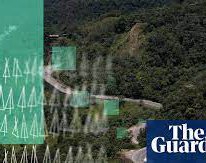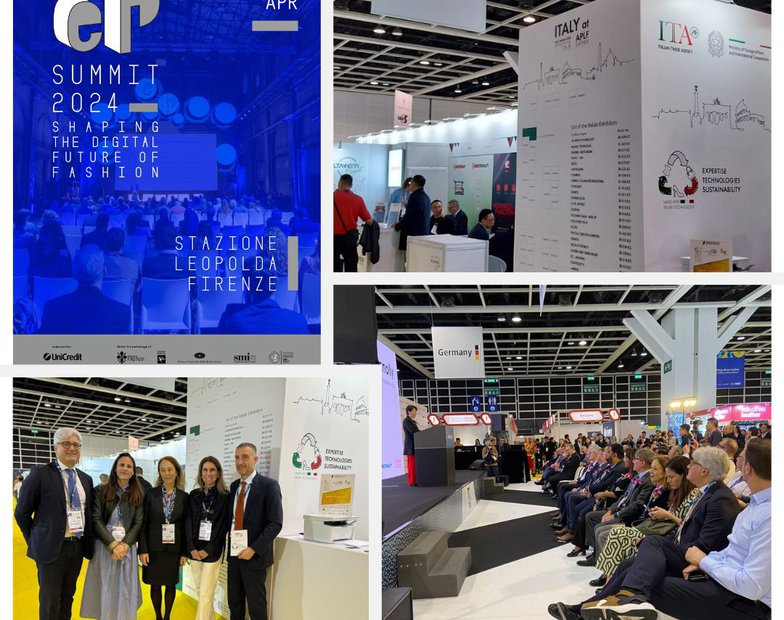A joint investigation by the Guardian, Die Zeit and SourceMaterial found that more than 90% of offset credits sold to protect portions of the rainforest are "ghost credits" and do not represent true reductions in carbon dioxide emissions. Gucci reacts through the public response of the certifier Verra, who denies the investigation. Vogue Business reflection is that "Carbon credits are defective. For now they are still needed"
For years, fashion has touted carbon offsetting as one of the ways it was going green. Brands from Burberry to Gabriela Hearst have used carbon credits to claim carbon-neutral runway shows, and Gucci declared its entire supply chain and operations carbon-neutral in 2019.
Credits and offsetting are part of the carbon market, a voluntary mechanism that’s meant to help governments and companies, as well as individuals, lower their carbon footprint by funding projects to remove carbon from the atmosphere or prevent future emissions. Crucially, this is supposed to only include projects that would otherwise not happen.
Carbon credits are now a fixture of sustainability strategies across retail, regardless of the company's other environmental commitments. But what are they really worth, and are they the sustainability solution they’re often promised to be?
This debate picked up renewed steam in January, when The Guardian reported that the vast majority of carbon credits approved by Verra, the largest certifier of such credits globally, are “worthless” because they lack evidence to show they reduced or prevented deforestation — the justification for approving the credit — and overstate the threat facing the forests in question.
Gucci, the only fashion brand mentioned as a buyer of Verra carbon credits in The Guardian piece, declined to comment for this story, although it has been clear that it tries to follow the mitigation hierarchy, which instructs businesses to avoid emissions and other environmental harm first and foremost, then focus on reducing, restoring and then offsetting or compensating as a last step. The Italian fashion house deferred instead to Verra’s detailed public response, which strongly refutes The Guardian’s claims, saying they're based on studies that lack geographic context and reach incorrect conclusions because of how they were designed from the start. The organisation also described efforts it’s implementing to improve how it develops the baselines for measuring the effectiveness of climate actions.
The Guardian’s findings were produced using its own methodology and were not peer-reviewed, prompting many criticisms of the report as flawed. Regardless, the carbon market is already controversial. Companies that buy carbon credits, which represent the removal of 1 tonne of carbon dioxide from the atmosphere, often say they are “offsetting” their emissions and are therefore carbon neutral, even if their own emissions are increasing. However, that doesn’t add up to a 1.5°C pathway, and some critics say that carbon offsetting does more harm than good by allowing companies to exaggerate or falsify their climate progress.
As more fashion brands lay out net-zero targets and turn to the carbon market to help meet them, the stakes involved in whether carbon credits are a legitimate or worthless component of a climate strategy could not be higher.
Fashion, like other sectors, can't align with the goals of the Paris Agreement without reducing its own emissions. But even while a company works to shrink its carbon footprint, the pressures facing the world’s remaining forests, and the people living in or near them, do not just disappear. The premise of carbon credits ultimately boils down to one shared consensus: the industry needs to funnel money into protecting, conserving and restoring forests and ecosystems, many of which are vulnerable because of short-term economic opportunities linked to their destruction.
“We can’t solve climate change, let alone protect biodiversity, without protecting forests. And there’s just no way we’re going to be able to do that without a lot of money,” says Timothy Searchinger, senior research scholar at Princeton University's Center for Policy Research on Energy and the Environment. But this is a big ask when people are already living in poverty, often made worse by a cost-of-living crisis. “No one’s going to say, ‘I care more about climate change than putting food in my mouth.’”
There are many questions around how companies finance the carbon market. How do they choose which projects to support, and what claims should they be able to make? Why are they allowed to buy carbon credits if they’re not doing much, or anything at all, to reduce their own emissions — and why are they voluntary? Finally, are carbon credits an effective means for generating the necessary funding and allocating it appropriately? Some say they’re not, while others argue the concept can work with the right safeguards.
“There are people who think [the voluntary carbon market is] just too dangerous, too much of a potential exploitation. And then there are people who think it is a market-based mechanism that is going to produce a lot of revenue in places that need it,” says Rachel Kyte, dean of The Fletcher School at Tufts University and co-chair of the Voluntary Carbon Markets Integrity Initiative (VCMI), which is developing a “claims code” to establish guidelines for how carbon credits can be used and what claims companies can make about their use. “And then there's a lot of people in the middle, including VCMI, saying this only works if we agree on the rules around integrity: that this can only happen in the context of a company's validated, science-based plan to get to net zero.”
Integrity in the carbon market is a global challenge, not fashion’s alone to solve. Still, it’s one the industry urgently needs to understand and learn how to navigate appropriately, not only for brands to meet their own sustainability goals, but to be prepared for increased scrutiny from regulators and consumers. The issue is evolving quickly, both as regulators clamp down on the kinds of marketing claims that companies make about their sustainability efforts and as momentum picks up to establish standards for the voluntary carbon market to abide by.
Making biodiversity conservation “somebody’s industry”
In the absence of a systemic restructuring of global economics — or until one emerges — many proponents of the carbon market say it’s one of the only and best means for channelling funds from wealthy countries, and companies, into the hands of communities in the Global South, who are being called on by the world to conserve their ecosystems without recognition that it’s often a matter of basic survival, let alone consideration of what proper compensation might look like.
“I wish so much for degrowth. I wish so much for a decolonised system. But we are all implicated. Even the pandemic didn’t change our ways. So, we have to work within the system,” says Joyce Hu, creative and marketing director at Wildlife Works, which develops REDD+ (Reducing Emissions from Deforestation and Degradation) projects using a community-driven approach to biodiversity conservation in countries from Colombia to the Democratic Republic of Congo. “Creating an equitable carbon market in an unequal world is hard work [and] takes deep collaboration with all stakeholders. It’s what we are striving to do.”
Wildlife Works, which sells carbon credits and counts Gucci parent company Kering among its biggest and most loyal customers, utilises the carbon market to channel funds to communities that are not only feeling the effects of climate change most directly, but are also closest to the ecosystems that can help curb its further acceleration if kept intact.
For Hu, carbon credits have little to do with the company paying for them and everything to do with the resources they provide.
“One of my biggest takeaways from COP27 is that Global South governments and forest communities want the carbon market. It's growing despite critics who are completely outside of the market,” she says. “Host governments and Indigenous peoples and local communities have real skin in the game. The voluntary carbon market is not only a way for [them] to have more control over climate finance — as opposed to waiting for public funding or philanthropy, loss and damages — but it leads towards a path for development that is not at odds with conservation.”
Without establishing that path, communities face tough choices — and in regions where economic opportunities remain scarce, natural resources are a lifeline.
“Stopping deforestation is nobody’s industry. Deforestation is somebody’s industry — someone’s responsible. The pressure on the forests will not disappear as long as there are other actors in and around the forests that need land, need resources,” says Wildlife Works founder and CEO Mike Korchinsky. “We don’t use the term ‘offset’, because we believe we’re producing an emissions reduction that no one else would produce unless it were financed through a mechanism like this.”
Many scientists who work with the carbon market agree that their key concerns about its effectiveness have more to do with methodology and reliable accounting of carbon storage than questionable intent. They don’t see fraud schemes running away with money intended for carbon offsets, for instance.
“I don’t think there’s a big problem in terms of intention. I think that folks who run these projects — they are almost all, as far as I know, in it for the right reasons,” says Nat Keohane, president of the Center for Climate and Energy Solutions. “Having said that, the climate doesn’t care about intentions. The climate cares about results.”
He is part of the Integrity Council for the Voluntary Carbon Market (ICVCM), an initiative that is working to set standards for verifying that carbon credit projects do what they say they are going to do — and that they deliver that promise for the long term, and not just for a year or five years. “It’s valid to ask: are the credits doing what they say they are? And how do we distinguish between the credits that are doing what they say they are and those that aren’t?” he says. The goal is to develop a way to assess projects against a set of standards and principles, he says. He expects the ICVCM to have an initial version of a “Core Carbon Principles” label, and the ability to see carbon credits that qualify, by the end of the year.
Part of a solution, not the only solution
If the ICVCM is working to improve the supply side of the carbon market, says Keohane, the VCMI is working to clean up efforts on the demand side — to ensure that carbon credits are being used as a real climate solution, and not as a path for companies to greenwash their way out of meaningful action.
“The largest participants in the market today are oil and gas companies. The voluntary carbon market should not be used to perpetuate oil and gas companies in their plans to develop more oil and gas and to continue to emit,” says VCMI’s Kyte.
The initiative has published a first iteration of a “code of conduct” that can be used to assess companies and award them a bronze, silver or gold status. It’s early stages, but the idea is to establish some uniformity in a market that has lacked regulation and oversight. “Only gold would allow you to make any future claim to net zero,” she says. “We’re operating outside of the regulatory sphere. There are questions for the future, but in the short to medium term, in advanced economies, we’re going to see pressure probably from consumer protection bureaus, advertising standards authorities and maybe some investor pressure. It’s going to be some time before the link between the voluntary markets and regulation starts to fuse.”
In theory, between the ICVCM’s and VCMI’s efforts, the voluntary carbon market should be a more reliable place in the relatively near future. Most proponents recognise the weaknesses, but say it’s the best solution in the economy we live in today. The flaws and imperfections that exist are not reasons to abandon the idea, but are the areas to hone in on and fix.
“It may have warts, and it may have more as it grows. But the growth, the trend overall, is hugely positive,” says Wildlife Works’s Korchinsky.
Companies that want to use carbon credits as a means of protecting nature — and complement work they’re doing to reduce their own emissions, but not replace it — need to pay attention to two main things, says Keohane. “Are they buying quality credits? Credits with the CCP label — that will be a symbol of quality [when it’s available]. And number two, are they participating in best practices internally?”
In fashion, best practices will include not only investing in the transition to renewable energy across the supply chain, but ensuring that raw materials and other supply chain practices are sourced and implemented in ways that do not counteract the benefits delivered by the carbon credit programmes it is paying for. Brands have a responsibility to work with suppliers to improve practices, says Princeton's Searchinger. Forest conservation credits, for instance, don’t help the climate if a brand buying them continues to also source leather connected to deforestation in the Amazon or viscose connected to the felling of trees in Indonesia.
One of Searchinger’s key criticisms of the carbon market is the lack of adequate scale and collaboration. Working on a project-by-project basis means the effort is too fragmented and small-scale to tackle the challenge at hand. A mechanism to fund the conservation of entire regions and keep them intact at scale — what the research community calls a “jurisdictional approach” — would go a long way, he argues.
Practical advice: What to know
In the meantime, there are ways fashion brands can navigate the carbon market as effectively as possible until more official guardrails are put in place.
Keohane says companies need to get their money’s worth, particularly at the individual project level. “If it’s really cheap — less than $10 per tonne — it’s probably not a very high quality credit. That’s not universal, but there’s a lot of stuff in the market that’s low quality and it’s also low price,” he says. “If something looks too good to be true, it probably is.”
Searchinger suggests brands should find jurisdictional projects to support, and invest in projects that are devoted specifically to restoring peatlands — because the destruction of peatlands is an overlooked but rapidly-growing source of global emissions. “They are going to sit there generating CO2,” he says. “That would be my top category.”
For brands not already invested in doing the work to both ensure they’re working with high-value carbon credit projects, and to aggressively reduce their own emissions, VCMI’s Kyte suggests they get started.
“People coming into the industry want to identify with brands and firms that have clear values but also plans around their carbon neutrality. It’s a cultural touchstone, so it’s very important,” she says. “If a brand says this is a carbon-neutral skirt or a carbon-neutral loafer without being able to explain what their science-based pathway is, that’s not high integrity. We would invite any firms in the industry to take a look or get involved in VCMI’s discussions around how to have a code of conduct in the voluntary market. The public is healthily sceptical [about] claims that can’t be backed up.”



